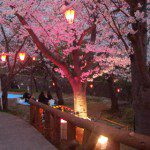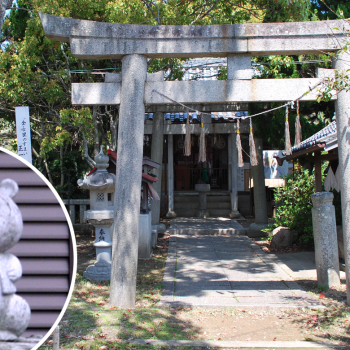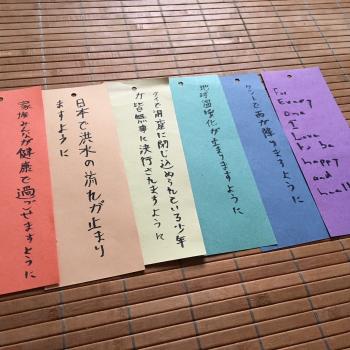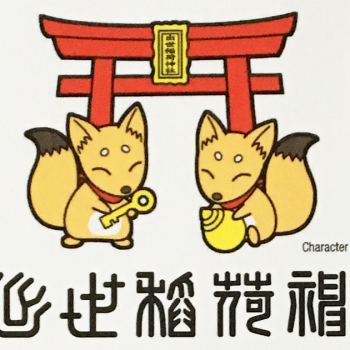I have previously written about my experiences acquiring a kamidana – a Shinto shrine for home worship – and the different items that make up the kamidana. In this post, I’d like to talk about what I do at the kamidana and my daily routine for honouring the Powers That Be, be they kami, spirits, or gods. Of course, I hold special rituals at specific times of the year, such as the Neopagan Sabbats and at the Full Moon. But for a Shintoist, it is thought best to pay one’s respects to the kami, even if in a simple and brief manner, on a daily basis.
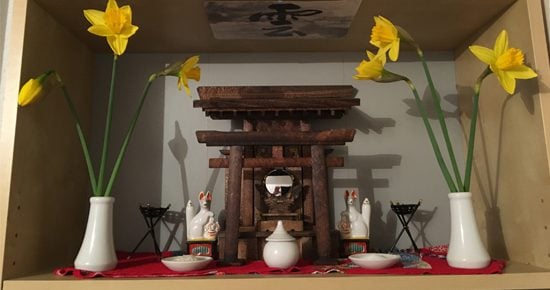
I make an effort to come before the kamidana every day. Admittedly I am less observant at the weekend because my schedule is not as regular, but I’m usually able to make time to visit the kamidana every weekday morning. I do this just after I’ve gotten dressed and before I eat breakfast. I make sure I brush my hair and look generally presentable – ideally, one should go before the kamidana in the same attire that one would wear to a public Shinto shrine. So one should avoid dirty clothes, nightwear, underwear, and, indeed, skyclad! There is a time and a place for nudity, or at least semi-nudity, in Shinto, but it is restricted to specific purification rituals.
Next comes purification. This is always an important part of Shinto rituals as cleanliness is literally next to godliness. I wash my hands and rinse my mouth out with salt water. Both the salt and the water come from previous offerings at the kamidana, as it is considered very important to use all offerings made to the kami.
Then it’s time to replace the old offerings with new ones. The standard offerings I make are water, rice and salt. The only offering I change every day is the water. Every week, I’ll also change the rice and salt (I either do this on Sunday night or Monday morning).
On special occasions, I’ll also offer nihonshū (a.k.a sake, Japanese rice wine). I do this for Japanese festivals, Neopagan festivals like the Sabbats and Esbats, or any other time that feels auspicious. I might also offer other food items like mochi rice cakes. Sometimes I’ll also swap the artificial sakaki leaves in the vases with cuttings from real plants, such as daffodils in spring and pine around Yule.
Occasionally, I’ll also put some money into a moneybox I have just below the kamidana. This is similar to how money is given at Shinto shrines when saying prayers. I feel it is especially important to offer some money because the principle kami whose essence is enshrined in my kamidana is Inari Ōkami, a kami associated with prosperity. Every November, I donate all the money collected in this way to the Movember Foundation, which is a charity that is very important to my husband. In this way, he is indirectly involved in my practice too!
Once I’ve made the offerings, it’s time to say prayers. Sometimes I ring a bell before saying prayers, as one would do at a Shinto shrine. But on weekday mornings I don’t as my husband is usually still asleep at this point and I don’t want to disturb him! I then say prayers in the traditional Shinto way: I bow twice, clap my hands twice, bow once more, and then put my hands together and offer prayers silently to the kami.
My usual prayers only last for a few moments. They usually follow the same format: I’ll begin first with an apology, if necessary, if I have missed a day in my routine kamidana visits. Apologies are very important in Japanese culture! I’ll then thank the kami for any specific blessings I’ve experienced recently, as well as gratitude for more general blessings such as food, a roof over my head, and life itself. I’ll then ask the kami to help me with any issues I’m having, or to bless me for specific tasks ahead. For example, I ask for the kami’s help for success and support in particular work duties, or for the kami to give me strength and encouragement when times are tough. Most importantly of all, I’ll ask for blessings on anyone I know who is ill or otherwise suffering. I’ll also ask the kami to extend blessings to those I do not know personally, such as those suffering through war or disaster, and to the natural world to keep all plants and creatures safe. Once I’ve finished my prayers, I bow a final time and then back away from the kamidana before leaving.
When I have a little more time, I also offer spoken Shinto prayers in the form of norito. On these occasions, I usually light some candles as well. Sometimes I may meditate as well.
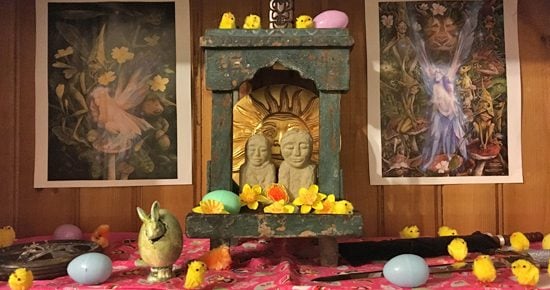
After prayer time at the kamidana, I prepare breakfast. But before I eat it, I try to make a very swift and simple prayer at my second shrine – my Pagan one! This altar is kept in our main lounge while the kamidana is in its own spare room upstairs, and I usually keep it decorated according to the season. I pray to the Great Goddess and Great God, and this time I usually say my prayers out loud. This is because the lounge is not as close to the bedroom where my sleeping husband is as the kamidana so I won’t disturb him! I also offer incense at the Pagan altar when I’m not too pushed for time. Again, the scent of the incense varies according to season. I don’t offer incense at my kamidana because I’ve read in some sources that the kami consider incense to be impure, possibly because it’s associated with funerals in Japan and the kami are repelled things to do with death.
And that is my daily spiritual practice, which honours both my Shinto and Neopagan paths. I’ve found it fits in very nicely with my morning routine and sets me up for the day ahead. Even if I have some kind of daunting task ahead of me, I always feel slightly better knowing that I’ve spoken to the spirits and that they are watching over me.


